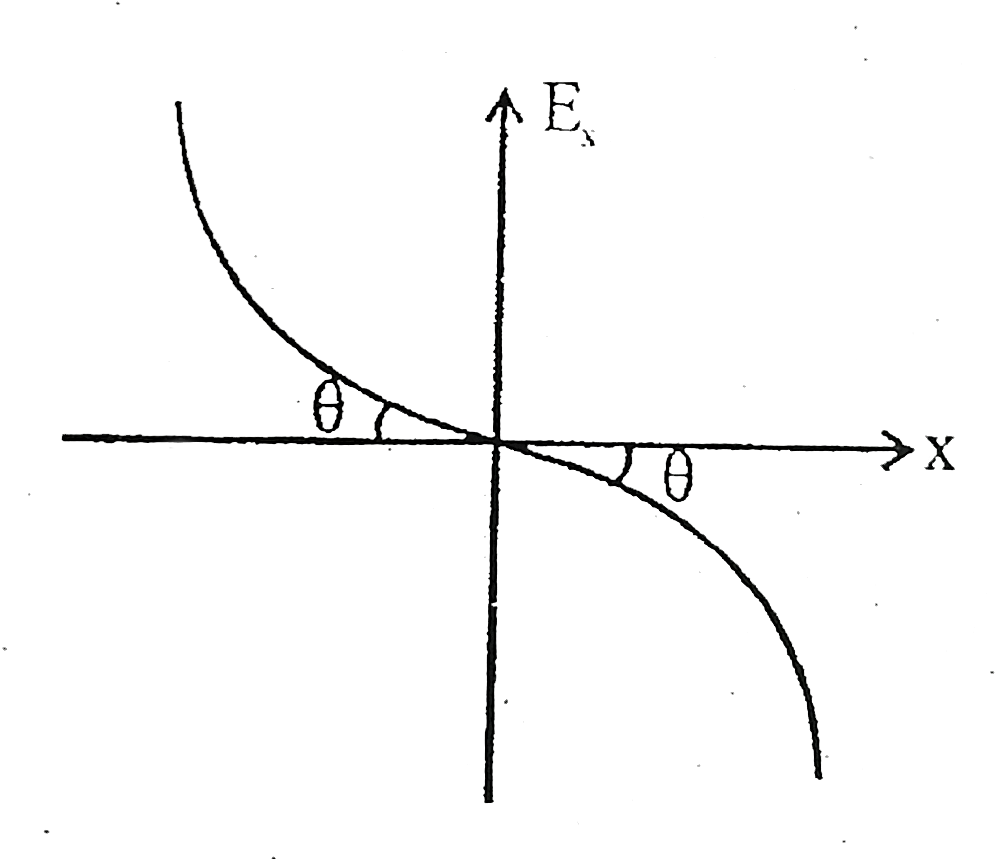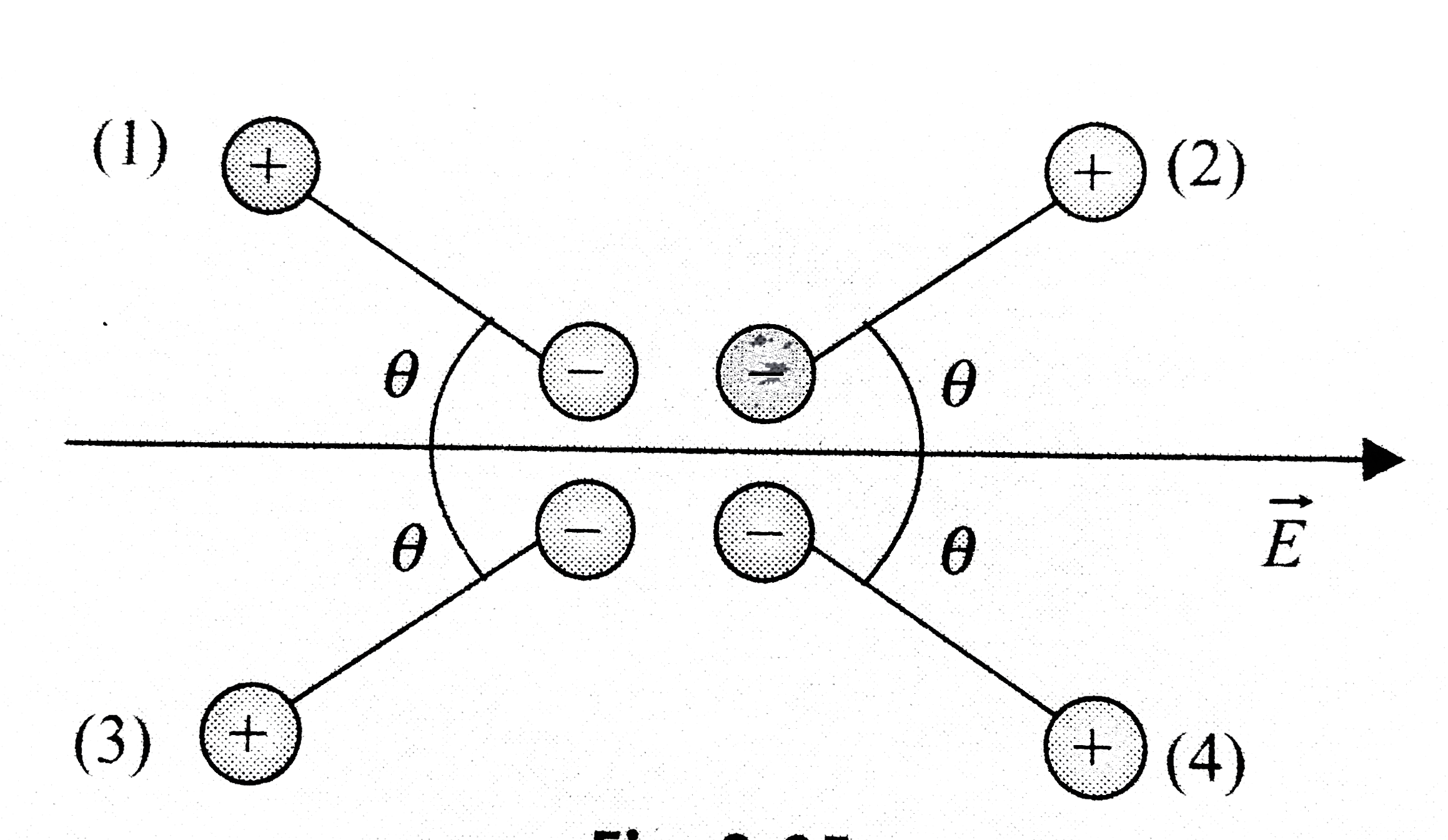Electric Dipole
Step-by-Step Solution:
1. Definition of Electric Dipole:
An electric dipole consists of two equal and opposite charges, denoted as +Q and -Q, which are separated by a certain distance.
2. Representation of Charges:
Let’s represent the positive charge as +Q and the negative charge as -Q. The distance between these two charges is denoted as 2a. This means that the distance from the positive charge to the negative charge is 2a.
3. Positioning of Charges:
If we place the positive charge +Q at a point on the x-axis, say at (0, 0), then the negative charge -Q will be located at (2a, 0). Thus, the charges are positioned at (0, 0) and (2a, 0).
4. Direction of Electric Dipole:
The electric dipole moment (p) is a vector quantity that points from the negative charge (-Q) to the positive charge (+Q). Therefore, the direction of the electric dipole is from -Q to +Q.
5. Mathematical Representation of Electric Dipole Moment:
The electric dipole moment (p) can be mathematically expressed as:
p=Q⋅d
where d is the vector pointing from the negative charge to the positive charge, which has a magnitude of 2a.
6. Conclusion:
In summary, an electric dipole is characterized by two equal and opposite charges separated by a distance, and it has a defined direction from the negative charge to the positive charge.
An electric dipole consists of two equal and opposite charges, denoted as +Q and -Q, which are separated by a certain distance.
Let’s represent the positive charge as +Q and the negative charge as -Q. The distance between these two charges is denoted as 2a. This means that the distance from the positive charge to the negative charge is 2a.
If we place the positive charge +Q at a point on the x-axis, say at (0, 0), then the negative charge -Q will be located at (2a, 0). Thus, the charges are positioned at (0, 0) and (2a, 0).
The electric dipole moment (p) is a vector quantity that points from the negative charge (-Q) to the positive charge (+Q). Therefore, the direction of the electric dipole is from -Q to +Q.
The electric dipole moment (p) can be mathematically expressed as:
p=Q⋅d
where d is the vector pointing from the negative charge to the positive charge, which has a magnitude of 2a.
In summary, an electric dipole is characterized by two equal and opposite charges separated by a distance, and it has a defined direction from the negative charge to the positive charge.
Topper's Solved these Questions
Similar Questions
A dipole of electric dipole moment p is placed in a uniform electric field of strength E. If θ is the angle between positive direction of p and E, then the potential energy of the electric dipole is largest when θ is
View Solution(a) Define electric dipole moment. Is it a scalar or a vector ? Derive the expression for the electric field of a dipole at a point on the equatorial plane of the dipole.
(b) Draw the equipotential surfaces due to an electric dipole. Locate the points where the potential due to the dipole is zero.
View SolutionAn electric dipole of moment p is palced in the positive of stable equilibrium in uniform electric field of intensity E. It is rotated through an angle θ from the initial position. The potential energy of electric dipole in the final position is
View SolutionThe potential energies associated with four orientations of an electric dipole in an electric field are (1)−5U0,(2)−7U0,(3)3U0,and(4)5U0, where U0 is positive. Rank the orientation according to the angle between the electric dipole moment →P and the electric field →E, and B magnitude of the torque on the electric dipole, greatest first.
View SolutionAn electric dipole has the magnitude of its charge as q and its dipole moment is p. It is placed in a uniform electric field E. If its dipole moment is along the direction of the field, the force on it and its potential energy are respectively
View SolutionVariation of x-component of electric field with x-coordinate in a region is given in the graph. A small electric dipole having dipole moment p0ˆi is placed at origin, then net force on the dipole is:

View SolutionAn electric dipole consists of two opposite charges of magnitude 1μC separated by a distance of 2cm.The dipole is placed in an electric filled 10−5Vm−1.The maximum torque that the field exert on the dipole is
View Solution(Fig. 3.95) shows four orientations of an electric dipole in an external electric field. Rank the orientations acording to the
a. magnitude of the torque on the dipole, and
b. potential energy of the dipole, greatest first.
 .
.
View SolutionA point Q lies on the perpendicular bisector of an electrical dipole of dipole moment p, If the distance of Q from the dipole is r (much larger than the size of the dipole), then electric field at Q is proportional to
View SolutionElectric Field due to Dipole
View Solution
